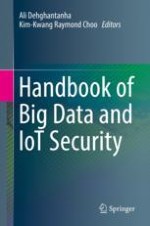2019 | OriginalPaper | Chapter
Analysis of APT Actors Targeting IoT and Big Data Systems: Shell_Crew, NetTraveler, ProjectSauron, CopyKittens, Volatile Cedar and Transparent Tribe as a Case Study
Authors : Paul J. Taylor, Tooska Dargahi, Ali Dehghantanha
Published in: Handbook of Big Data and IoT Security
Publisher: Springer International Publishing
Activate our intelligent search to find suitable subject content or patents.
Select sections of text to find matching patents with Artificial Intelligence. powered by
Select sections of text to find additional relevant content using AI-assisted search. powered by
